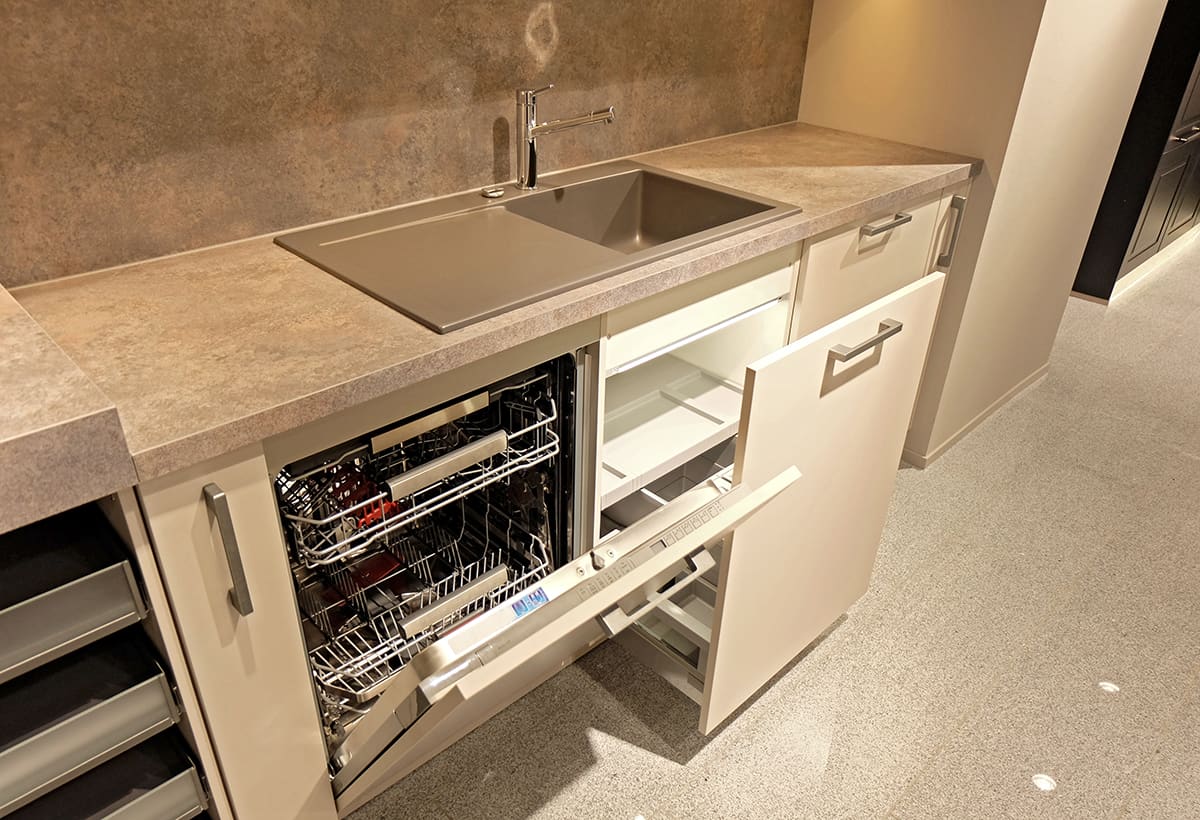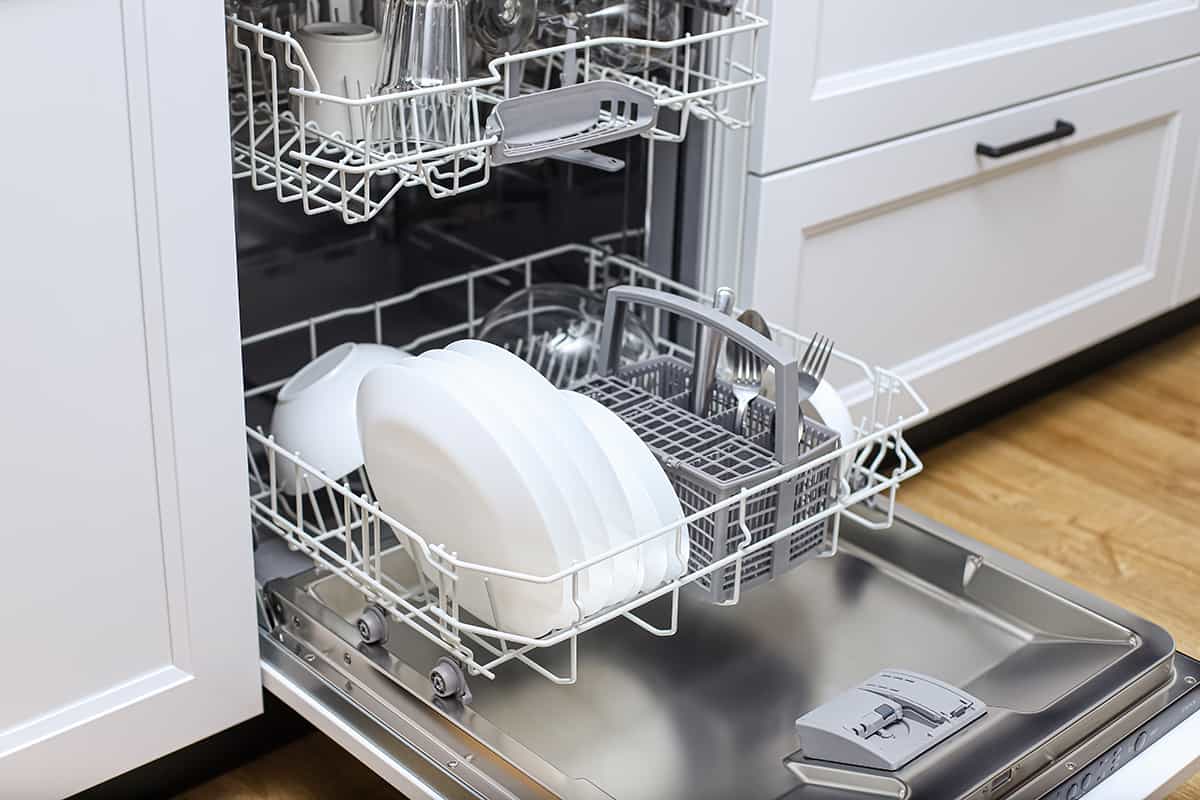Smaller homes and apartments present unique challenges when it comes to saving kitchen space. Stacking appliances is a great way to save counter space, but can you save floorspace by stacking a dishwasher and a washing machine?
Yes, you can. Because washing machines are generally heavier than dishwashers, even when unloaded, the washing machine should be at the bottom. While stacking dishwashers and washing machines is possible, it’s generally not advised.
In this guide, I’ll explain the benefits of stacking appliances on top of one another, what you need to consider when stacking a dishwasher and a washing machine, and the alternatives to stacking appliances.
Benefits of Stacking Appliances
Small kitchens can be a major issue for many people, both those who own their homes and those who rent. In homes or apartments with less space, installing all the required kitchen appliances and providing adequate storage can be challenging. This can make it difficult to move around the kitchen, in addition to contributing to a general feeling of crampedness and chaos in the home.
Luckily, stacking certain appliances can help resolve those issues. Stacking appliances is a great way to make the most of the limited space in a kitchen while also saving money and improving the overall design and functionality of the kitchen.
It’s easy to see how this could help people who are tight on space by freeing up room on the ground. Storing appliances vertically allows you to use the available floor space better. This provides more freedom of movement within the cooking space and can facilitate simpler cleanup and maintenance procedures.
Additionally, if you stack your appliances, you’ll have easier access to the ones you use the most. If you stack a microwave on top of a toaster oven, you won’t have to move any other appliances out of the way to use either one.
Another nice perk of stacking appliances is that it can help you save money. An excellent way to save money is to buy a single appliance that can perform multiple tasks, such as a refrigerator with a small freezer.
Additionally, stacking appliances can enhance the aesthetics and practicality of your kitchen. A well-organized and efficient kitchen is much more pleasant to work in, and this helps you make the most of the space you have.
Can You Stack a Dishwasher and a Washing Machine?
Some conditions must be met, but yes, you can stack a dishwasher and a washing machine.
The first condition is that the dishwasher should be on top and the washing machine on the bottom. This is because the average weight of an empty dishwasher is roughly 77 pounds, whereas the average weight of an empty front-loading washing machine is 150 pounds. Naturally, the lighter object should be on top of the heavier object.
I briefly touched upon the second condition earlier, which is that the washing machine must be a front-loading model. The only way you can load your washing machine with something on top of it—e.g., a dishwasher—is if the door is on the front and not on top.
Thirdly, the floor of the cabinet also needs to be sturdy enough to support the washing machine. The cement blocks used as counter-balances in front-loading washers add extra weight, so the cabinet floor needs to be reinforced to handle not only the appliance’s own weight but also the extra weight.
Stacking a dishwasher and a washing machine isn’t a do-it-yourself project because of the need for professional installation to ensure the safety of the appliances and their connections to water and power.
Last but not least, the dishwasher and the washing machine should be compatible with each other in the sense that you have enough cabinet space and empty vertical clearance for both appliances. If your upper cabinets are in the way, you will either have to tear them out to accommodate the dishwasher or scrap the project altogether.
Alternatives to Stacking a Dishwasher and a Washing Machine

While stacking appliances may seem simple, turning it into a reality is a completely different story. I suggest reaching out to professional contractors to help you figure out how you can stack your dishwasher and washing machine.
On the other hand, if you want to save space in your kitchen without taking on the risk of placing a dishwasher on top of a washing machine, you can consider the following alternatives.
1. Invest in an integrated dishwasher
Rather than getting a freestanding unit, you should think about spending a bit more on integrating your dishwasher into your existing cabinetry. It’s meant to look like it’s always been a part of the kitchen’s cabinetry, so it’s usually installed at the same time as the rest of the cabinets.
If your kitchen is tight on square footage, an integrated dishwasher is a great choice. Built-in appliances not only enhance the aesthetics and practicality of your kitchen but also free up valuable floor space. Because they are built into the counter, they don’t take up as much visual space as freestanding dishwashers, which is a plus for minimalists.
2. Get a portable dishwasher
When not in use, a portable dishwasher can be moved to a different location in the kitchen or stored away. Because of this, you can store and use them however you like. Portable dishwashers are more mobile than their stationary counterparts because of their compact size and mobility features, such as wheels.
Those with a small kitchen may find a portable dishwasher to be a convenient option because of this. It doesn’t require a permanent spot in the kitchen because it can be put away when it’s not in use.
Furthermore, portable dishwashers can be a cost-effective alternative for renters who are not permitted to install a built-in dishwasher in their rental property. They are also a viable choice for those who want the ease of a dishwasher but have a modest kitchen or limited space.
3. Place your washing machine in a different room
It’s preferable to keep a washing machine in a separate room, as their use can add extra noise and moisture to the kitchen and take up valuable floorspace that could be put to better use elsewhere. The kitchen may also take on the aroma of wet laundry.






